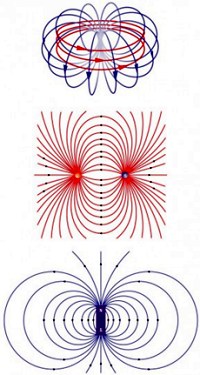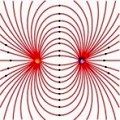An explanation as to why we cannot detect 85 percent of the predicted mass of the universe has emerged from fundamental particle research carried out in the 1930s. US physicists have now proposed that dark matter, may be composed of Majorana fermions, which are anapoles with a doughnut-shaped electromagnetic field invisible to any known detector technology.
Invisible touch: What’s the matter?
Published: Jun 15, 2013
Author: David Bradley
Channels: NMR Knowledge Base
Anapole to anapole
An explanation as to why we cannot detect 85 percent of the predicted mass of the universe has emerged from fundamental particle research carried out  in the 1930s. US physicists have now proposed that dark matter, may be composed of Majorana fermions, which are anapoles with a doughnut-shaped electromagnetic field invisible to any known detector technology.
in the 1930s. US physicists have now proposed that dark matter, may be composed of Majorana fermions, which are anapoles with a doughnut-shaped electromagnetic field invisible to any known detector technology.
The idea that much of the matter in the universe is “invisible”, dark matter, derives from the behaviour of distant galaxies – the stars within them are simply moving too fast for the mass of the galaxy calculated based on the light and other forms of radiation we observed coming from those galaxies. As such, in the 1930s, Jan Oort (of eponymous solar system ice cloud fame) postulated that there must be a form of matter that pervades the universe but does not interact in any way with electromagnetic radiation. It seems fanciful, but then so did the notion of the Big Bang at the time.
Discovery period
During this same period of discovery, scientists with a smaller perspective were investigating the concepts of particles that have a magnetic dipole moment, but do not have a “North” and a “South”, such particles are not monopoles, i.e. they are not a single pole. Theory suggests that such an entity – an anapole – would have to possess a toroidal, or doughnut, shape.
Now, these two worlds collide – the cosmic and the quantum – with a proposal strengthened by theoretical work from Vanderbilt University that suggests dark matter might be comprised of such anapole particles. Robert Scherrer and post-doctoral fellow Chiu Man Ho describe details in the journal Physics Letters B. “There are a great many different theories about the nature of dark matter. What I like about this theory is its simplicity, uniqueness and the fact that it can be tested,” explains Scherrer.
Mass production
Dark matter comprises about 85 percent of the matter in the universe, although that amounts to about 27 percent of the total “stuff” of the universe – energy and matter. The familiar matter of mountains and molehills comprises less than 5% of the total while dark energy, a force that seems to be cause the universe to expand more rapidly than theory suggests, makes up the remaining more than two-thirds.
Scherrer and colleagues’ work supports the suggestion that specifically the basic particle of which dark matter may be comprised is the hypothetical Majorana fermion, first posited in the 1930s by Italian physicist Ettore Majorana who theorised about a variation of Dirac’s fermion formulation that allows an electrically neutral fermion to exist.
Scherrer and Ho have performed detailed calculations that show that Majorana fermions should be toroidal anapoles, which means they should not interact with present detectors. Until now, researchers building model in the hope of explaining the nature of dark matter have made the assumption that whatever it is it must interact with the “visible” universe via some exotic unknown force. Scherrer and Ho’s work hints that we need not invoke any new forces – anapole dark matter would interact with the rest of reality through conventional electromagnetism. The theory also hints that most of the original dark matter in the universe would most likely have been annihilated at the time of the Big Bang.
Magnetic anapoles were first predicted by Soviet physicist Yakov Zel’dovich in 1958 and have been observed in the magnetic structure of the nuclei of caesium-133 and ytterbium-174 atoms, so there esoteric existence is now beyond doubt. The model even indicates the rate at which anapole dark matter will appear in the vast dark matter detectors that are buried underground all over the world. If these particles never show up in the detector, then we can discount the anapole theory.
“We are now trying to formulate a more fundamental theory from which this anapole dark matter theory can be derived,” Ho told SpectroscopyNOW. “Of course, we hope that our theory is the one realized by nature.” He adds that the next step will be to work out how to test the theory at the Large Hadron Collider.
http://www.spectroscopynow.com/details/ezine/4907341/Invisible_touch_Whats_the_matter.html?tzcheck=1
